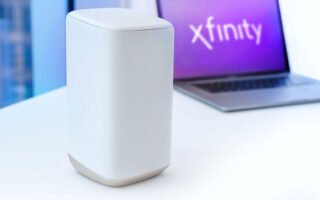Choosing the right access platform can make or break your day. Tight access? Polished floors? Sloped ground? Before you book, it pays to know when a spider lift beats a cherry picker—and when the opposite is true.
TL;DR (for busy teams)
- Spider lift: wins in narrow access, on uneven/soft ground, and over sensitive floors.
- Cherry picker: wins on speed, simple “straight up” jobs, and sites with easy vehicle access.
- Decide using four checks: access route, working height/reach, ground/floor, disruption.
What is a Spider Lift (Tracked Boom)?
A compact, lightweight MEWP on rubber tracks with outriggers (“spider legs”) for stability. It folds small to pass through standard doors or gates, spreads load gently across delicate surfaces, and levels itself on slopes.
Where it shines
- Narrow doorways, corridors, courtyards, gardens
- Finished floors (malls, airports, galleries) and mezzanines
- Uneven, sloped, or soft ground
- “Up and over” tasks around obstacles
Typical numbers
- Working height: 10–30 m (most hires 12–22 m)
- Excellent set-down pressure (low ground loading)
- Non-marking tracks available
What is a Cherry Picker (Boom Lift / Truck-Mount / Self-Propelled Boom)?
A versatile boom on a self-propelled chassis or truck mount. Think fast setup, rapid redeployment, and big outreach on sites with good hardstanding.
Where it shines
- Street works, telecoms, signage, façade cleaning
- Flat, firm ground with clear access routes
- Multiple jobs across a large site in one shift
Typical numbers
- Working height: 10–48 m (model dependent)
- Class-leading outreach for “up and over” on open sites
- Quick to reposition: drive, set, elevate
Side-by-Side: Quick Comparison
| Feature/Use Case | Spider Lift | Cherry Picker |
| Tight Access (doors, corridors) | Excellent | Sometimes too large |
| Uneven/Soft Ground | Strong (outriggers) | Needs firm, level base |
| Indoor, Sensitive Floors | Ideal (low load, non-marking) | Limited; check emissions/tyres |
| Speed of Setup/Move | Slower (deploy legs) | Fast (drive, set, go) |
| Working Height | 10–30 m | 10–48 m |
| Outreach | Good | Excellent |
| Disruption to Public Areas | Low once in position | Low–medium (vehicle movement) |
| Operator Category | IPAF 1b/3b (model) | IPAF 1b/3b (model) |
How to Decide in 4 Steps
1) Map the Access Route
- Doors/gates: minimum width/height? Any sharp turns?
- Passenger lift use: machine weight vs lift rating (if indoors)
- Ground to reach point: steps, ramps, thresholds?
If the route is tight or delicate → Spider lift.
If access is wide open and you’ll move a lot → Cherry picker.
2) Confirm Height and Outreach
- Working height needed (task height + user + reach)
- Horizontal outreach around obstacles (trees, canopies, parapets)
Big heights and long outreach on open ground → Cherry picker.
Complex up-and-over with tight setup space → Spider lift.
3) Check Ground/Floor
- Indoors: floor loading, finishes (vinyl/resin/stone), non-marking requirement
- Outdoors: slopes, soft spots, grass, cobbles, covers/voids
Soft/uneven/sensitive → Spider lift with pads.
Firm, level hardstanding → Cherry picker.
4) Plan for Disruption & Speed
- Need to hit many points in a day?
- Working in live public areas?
Rapid multi-stop routes → Cherry picker.
Low-impact presence in live buildings → Spider lift.
Cost & Productivity (Real-World View)
- Daily rate: spider lifts can cost more due to delivery/matts/leg time—but they save rework and prevent floor damage indoors.
- Cherry pickers typically win on hourly productivity for simple, repeatable tasks on open sites.
- Always factor delivery method, operator, out-of-hours charges, floor protection, and RAMS time.
Safety & Compliance Essentials (Both Types)
- Trained operator (IPAF category to match machine)
- Pre-use checks and model familiarisation
- Exclusion zone: cones/barriers, a banksman if public nearby
- Weather limits: know wind thresholds; stop for storms
- Harness policy per site/machine guidance
- Keep inspection/maintenance records accessible
Typical Use Cases
Pick a Spider Lift for:
- Atriums, shopping centres, galleries, airports
- Church spires, tree surgery on slopes, cliff edges
- Courtyard façades with narrow alley access
- Jobs where floor loading and clean finishes matter
Pick a Cherry Picker for:
- Street lighting, telecoms, CCTV, signage
- Large façades with frequent moves
- High-reach tasks on open industrial estates
- Time-critical call-outs across multiple locations
FAQs
Is a spider lift better indoors?
Yes. Compact chassis, low ground pressure, and non-marking tracks make spider lifts ideal for finished floors and tight access.
Do cherry pickers set up faster?
Generally yes. They’re quicker to position and redeploy across multiple work points on flat, open ground.
What licence do I need?
Powered access should only be used by trained operators—typically IPAF 1b/3b depending on the boom type.
What’s the max height difference?
Spider lifts commonly reach 12–22 m on hire fleets (some to 30 m). Cherry pickers run from 10 m to 40 m+.
Will either mark floors?
Spider lifts are designed to protect delicate surfaces. For cherry pickers, confirm tyre type and weight against the floor spec.
Final Thoughts
Neither machine is “better” overall—the right one is the one matched to your access route, ground, height/reach, and disruption limits. Get those four sorted, and the rest falls into place.
Need help choosing? Share your task height, access photos, ground/floor details, and schedule. We’ll spec the right platform—spider lift or cherry picker—so your team can get in, up, and done safely.




